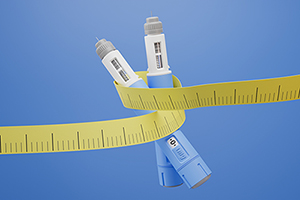



| By Dr. Ronald Hoffman

As many of you know by now, my training in college was in anthropology. This study of diverse cultures and human evolution informs my understanding of human health to this day.
The Raw and the Cooked is the title of an influential book by French anthropologist Claude Levi-Strauss which enjoyed cult status during my undergrad years. Suffice it to say it’s not a cookbook, nor is it a polemic on behalf of one type of diet or another.
Rather—and I’m not sure I understand half of what Levi-Strauss was saying even to this day—The Raw and the Cooked is a paean to what made our primitive ancestors distinctly human.
Food preparation and cooking are high order cultural activities that engendered societal cooperation, language, and technological innovation.
But what once facilitated the evolution of modern humans may, paradoxically, ultimately prove to be our undoing.
This point is convincingly argued by evolutionary biologist Dr. Rachel Carmody. I caught one of her lectures at the American Museum of Natural History recently—you can watch it on YouTube here.
She starts by comparing modern humans to chimpanzees. Chimps are smaller than humans. Their brains are one-third the size of ours, limiting their energy needs. And, when foraging for food, they range merely a few kilometers, whereas Paleo humans frequently traveled 10-20 kilometers per day. Those features add up to considerable higher caloric requirements for humans.
And yet, chimps have stronger jaws and bigger teeth for chewing, and better digestive systems for extracting nutrients from fibrous foods.
So how did proto-humans transcend evolutionary barriers to feed larger bodies and brains and extend their foraging capabilities despite inferior digestive capabilities?
“Humans externalize some of their digestive requirements.” In those words, Carmody encapsulates how humans transcended their biological constraints with a cultural adaptation: food preparation. What our stomachs can’t do, we accomplish in the kitchen.
Archaeological evidence confirms that food preparation methods with crude stone and wood implements were underway millions of years ago among pre-humans. Foods were pounded, husked, soaked and even fermented in what’s called “non-thermal processing” even before the advent of cooking with fire.
Carmody’s research reveals that cooking was a great leap forward for mankind, rendering starches, proteins, and fats more amenable to digestion.
Imagine, for example, eating a raw sweet potato. It’s tough and unyielding, and tastes bland. That’s because its starch granules are pretty impervious to salivary amylase, the enzyme that cleaves complex carbohydrates into simple sugars.
But pop that sweet potato in the microwave—or roast it on campfire embers—and when you bite into it, it tastes wonderfully sweet. Sugar is released as the result of the action of amylase on starch molecules.
Similarly, muscle tissue is encased in collagen fibers which make the meat tough and render its protein less accessible to protease enzymes that break it down into absorbable amino acids in the small intestine. Mammoth sushi? I don’t think so . . .
But heating breaks the collagen matrix that surrounds muscle fibers, and it also denatures the proteins to make them more digestible.
Fat, too, is rendered more readily assimilable when foods are prepared by mechanical methods or by cooking.
Thus, humans were able to surpass their primate forebears in size, mobility, and brainpower when freed from the constraints of a high “cost of digestion”. All that chewing, digestive force, and caloric extraction was outsourced to the kitchen where foods were prepared. Less nutritional content was lost in the feces due to the inaccessibility of nutrients locked in tough matrices resistant to digestion.
Evolutionary biologists and anthropologists also note that concentrating nutrients into discrete meals enabled our forebears to spend less time chewing incessantly to meet their caloric needs. This enabled cultural developments of a higher order—language, religion, art, tool-making, and knowledge exchange.
Still, prepared foods that our ancestors ate can’t hold a candle in terms of caloric impact to modern, ultra-processed foods.
While it may not seem like it, it actually takes work to eat. While monkeys may expend up to half of their energy chewing and digesting, eating among hunter-gatherers is more economical but still costs them around 10-15 percent of their daily caloric budget—roughly equivalent to the energy cost of foraging and hunting. But in our relentless drive to minimize the energy costs of eating, we’ve spawned an obesity epidemic.
Modern foods are subject to industrial processing to make them extra soft and palatable. They’re often laced with emulsifiers that make their added refined fats highly assimilable. Their high sugar content makes it unnecessary to expend energy capital to break down fibrous complex carbohydrates. Even ubiquitous flours that constitute our bread, pasta and noodles, waffles and pancakes, breakfast cereals, cakes and cookies and chips are mechanically processed to unlock their caloric payload.
So, what are some of the implications of the research I’m sharing with you here?
I’m not a raw foods advocate, because I believe that long-term reliance on such a diet can lead to nutritional deficiencies. Besides, we’ve evolved millions of years ago to rely on food preparation methods to unlock critical nutrients. We can’t go back and emulate our primate forebears—we’ve lost the digestive equipment.
But we can reverse-engineer evolution to include ample amounts of minimally-processed, high-fiber, low-glycemic index foods like those our Paleo ancestors might have consumed.
An interesting example of how that works is via consumption of resistant starch. Ordinary starch yields 4 calories per gram when completely digested and absorbed in the small intestine.
But in its resistant form, starch evades breakdown in the small intestine and passes into the colon, where it becomes a substrate for microbial metabolism, yielding beneficial short-chain fatty acids like butyrate—whose caloric impact is only 2 calories per gram or less.
Resistant starch thus supports a healthy microbiome, alleviates constipation, repairs “leaky gut”, improves insulin sensitivity, encourages satiety, and provides a quality fuel with less caloric impact than ordinary starch.
Sources of resistant starch include cooked and then cooled potatoes, unmodified potato starch, green bananas and plantains, various legumes, cashews, and raw oats.
Evolution is marvelous! If only we heed her dictates!
Though we think of declining estrogen as the hallmark of menopause, it's actually common for…

Up to 12 percent of Americans have ulcers at some point in life. Peptic ulcers…
Gallbladder disease is a modern illness. An estimated 20 million Americans have gallbladder disease. The…

New, more powerful weight loss drugs: Drugs like Wegovy, Rybelsus, Ozempic and Mounjaro/Zepbound are revolutionizing…

According to the Lancet, autoimmune disease affects one in ten people globally and it’s now…

This past week we were regaled with headlines like: High levels of niacin may increase…

Leyla Weighs In: The Erosion of Trust in Nutritional Research

Our virtual voicemail is open 24/7, so there's no need to wait to submit your questions for Dr. Hoffman. Leave a message, and you may hear your question featured on the Intelligent Medicine radio program!